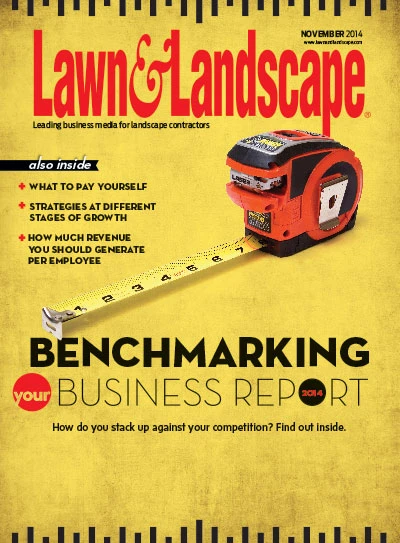
 If your landscaping service is typical, workers’ compensation costs – or the threat of them – can quickly become a major expense burden. Almost every business in the United States that has employees must deal with the cost of workers' compensation, so you’re not alone in this potentially damaging liability.
If your landscaping service is typical, workers’ compensation costs – or the threat of them – can quickly become a major expense burden. Almost every business in the United States that has employees must deal with the cost of workers' compensation, so you’re not alone in this potentially damaging liability.
Fortunately, there are steps you can take to help keep your workers’ comp costs under control while lessening the chances of a costly and burdensome claim. But keep in mind that employers who have successfully cut their workers’ compensation costs report that this is a challenging task requiring attention and commitment on the part of management.
Perhaps most important is an understanding that policies designed to protect employees’ safety and well-being provide a solid foundation for minimizing workers’ compensation claims. Experience shows that employees who feel workers’ safety is a major concern of management are less likely to attempt to abuse the workers’ compensation system.
Here are 10 steps you can take to help control workers’ compensation claims and insurance premiums for your business:
1. Cost control begins with the hiring process. Within the limits imposed by labor law restrictions, pre-hiring interview techniques should be designed to identify applicants who may pose a higher than average behavior or accident risk potential.
2. After first obtaining written consent from the applicants, conduct thorough background checks before hiring. Include physical fitness exams appropriate for the job if included in the written consent. Applicants who are reluctant to agree to such checks should be viewed with suspicion.
3. Have permanent programs in place to train employees on safe working behavior. Discourage unsafe working habits. Instruct employees not to take risks with equipment. Encourage the safest, least risky procedures even if they may take longer to complete the job. Make sure that new workers are aware that safety is a top priority in the operation of your service.
|
Weed out before you bleed out Workers' comp claims can be minimized by hiring the right employees. Keep these practices in mind during the interview process to find the right people for your company.
|
4. Maintain safety awareness throughout the workplace. Remind your employees to practice safety procedures by displaying safety posters in an employee-only area not seen by customers if you have one. If not, regular discussions by you about employee safety will help.
5. Within legal parameters, maintain your efforts to identify employees or applicants with drug or alcohol problems. A failure to address this issue might be considered by some as your lack of interest or concern. That, in turn could result in legal problems in the case of accident or injury.
6. Make certain that all of your vehicles are properly inspected and maintained. In particular, complaints about problems that could involve safety must be addressed at once.
7. Be sure to classify employee job descriptions and titles correctly. Obviously, some jobs are riskier than others. Lawn mowing carries more risk than that of office work or dispatching. That’s why it’s important not to assign all of your employees to the same job classification unless you are certain that is correct. With more than 600 job classification codes in use today, improper job classification for even one employee could increase your workers' compensation premiums.
Each classification code is based on the level of risk associated with that job. Job codes are subject to change, so it’s important to use the most recent edition of the classification codebook for your state.
Unfortunately, some business owners intentionally misclassify workers and manipulate payroll figures with the intent of lowering insurance costs. Even worse are situations where employers have no workers’ compensation coverage at all. Employers who engage in this type of unlawful activity not only put their own workers at risk, but also risk harsh financial penalties and even criminal prosecution.
8. If your operation is large enough, establish a safety committee made up of at least one employee and yourself. Even in a small operation, this step will establish your continued concern for employees’ well-being. The committee’s stated purpose will be to identify and correct safety problems and provide ideas for improving safety efforts and programs.
9. In the event of an employee injury, even one of a seemingly minor nature, be sure to provide medical attention promptly to minimize possible complications from delayed care. Complications to even a slight injury can result in increasingly costly workers’ compensation claims, which in turn can result in permanently increased insurance premiums.
10. If one of your employees should go out on a disability claim, work to get him or her back to work as quickly as is practical. An employee who is unable to return to work on a full-time basis may be able to work part-time or in a job of lesser demands. The longer an employee remains unable to work, the more the insurance company will be required to pay in compensation benefits; that in turn is likely to result in increased insurance premiums for your business.
Many employers look at the costs of workers' compensation insurance as an unavoidable expense over which they have little or no control. However, experience shows that workers' compensation costs will respond to dedicated efforts to keep them in tow. A casual attempt isn’t likely to do the job, but a determined and continual effort can result in not only major reductions in expense, but dramatic improvements in employee morale as well.
The author is a freelance writer based in Abington, Pa. He has 40 years experience in business management and financing.

Explore the November 2014 Issue
Check out more from this issue and find your next story to read.





